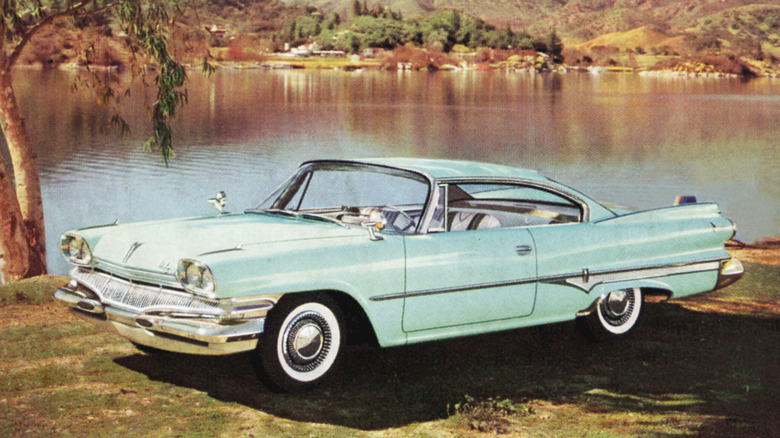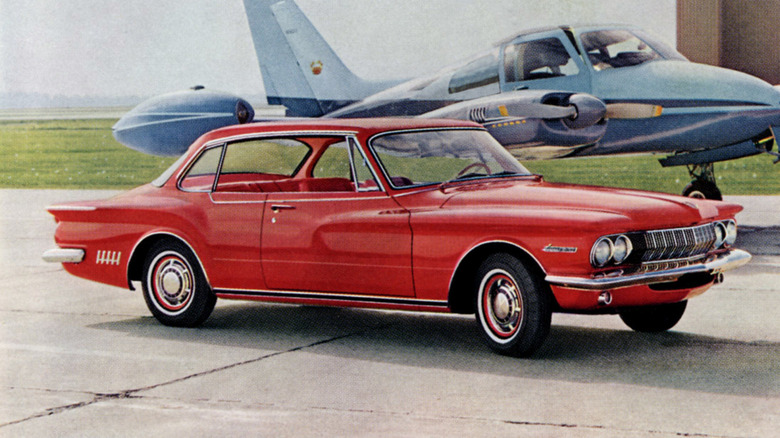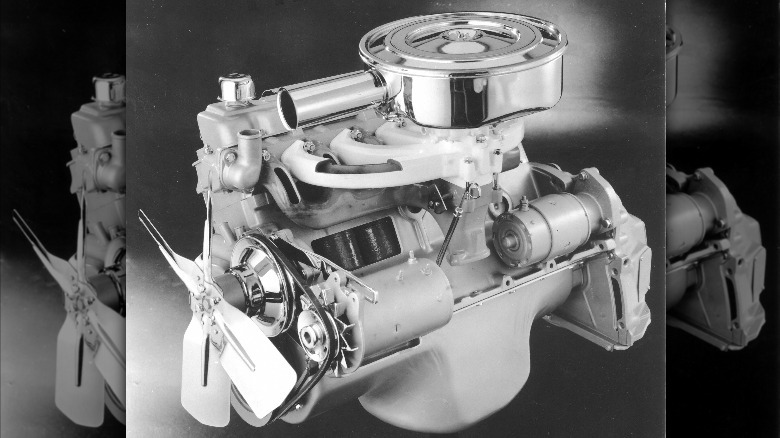Why Chrysler Used The Leaning Tower Of Power Slant-6 For Almost 25 Years
Chrysler (now part of Stellantis) has always been known for its engines. Today, its most famous engine is the supercharged 6.2-liter V8 that produces north of 700 horsepower. That powerplant is most at home within the engine bay of the Dodge Charger and Challenger Hellcats. But it has also been featured in the Jeep Grand Cherokee Trackhawk, Dodge Durango Hellcat, and Ram TRX pickup. It's a prolific engine to say the least.
In the past, Chrysler melted competing cars on the drag strip with massive engines like the 426 cubic inch "Hemi" V8, which powered cars like the Plymouth 'Cuda and Dodge Charger. The 426 Hemi, as it was called, became one of the most legendary engines of all time and is still regarded as a powerhouse almost 60 years after it first rolled off the line. Another Chrysler powerplant is famous, not for its inordinate amount of horsepower, huge displacement, or street racing cred, but for its simplicity, inexpensive nature, and rock-solid reliability. That engine was the Chrysler "Slant-6," the "Leaning Tower of Power."
At home on the land, sea, or farm
The engine was first introduced in 1960 as an economy option for customers that wanted usable power but didn't want it to use as much gas as a larger V8. It bore the moniker "Slant-6" because the top of the engine was canted to one side as opposed to standing straight up like other inline-cylinder engines. Advertisements from the time boasted of the engine's ability to sip fuel. This was decades before efficient four-cylinder engines dominated the market. According to Consumer Guide, the powerplant was used until 1987. The engine lived through not only the Golden Age of muscle cars from the 1960s, but the inefficient land yacht era of the 1970s.
In the same way that truck and van drivers loved the 300 inline-six from Ford, they also loved the Slant-6 because it was dead simple, cheap and easy to work on, and ubiquitous — there was a basically limitless supply of parts The Slant-6 was available in just about every vehicle that sported the Chrysler name. It sat within the engine bays of everything from bone-stock featureless Dodge Darts that were little more than a steel shell with seats, wheels, to engine to base-spec Plymouth Barracudas and even outboard boat motors. The engine also saw widespread use in the industrial and agricultural sector where it powered water pumps and farming combines.
Eventually the Slant-6 was phased out because it wouldn't fit in the engine bay of Chrysler's new K-platform. A new, smaller four-cylinder engine replaced the Slant-6 as Chrysler's budget option (via Consumer Guide).


